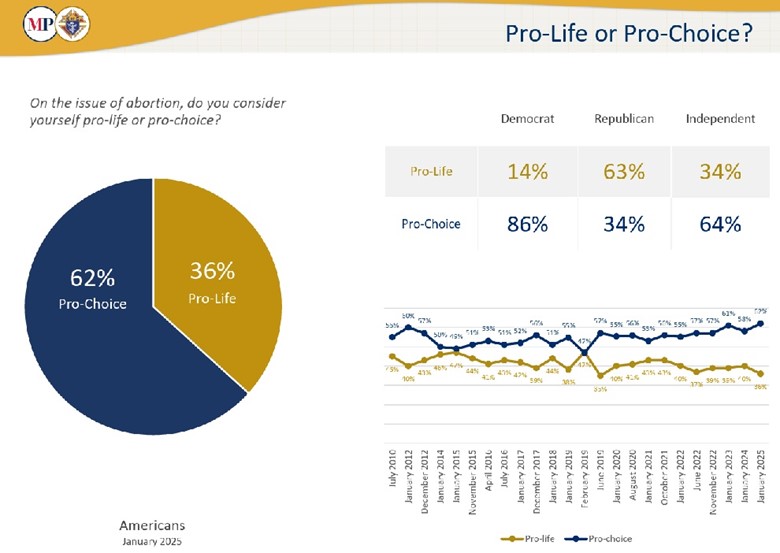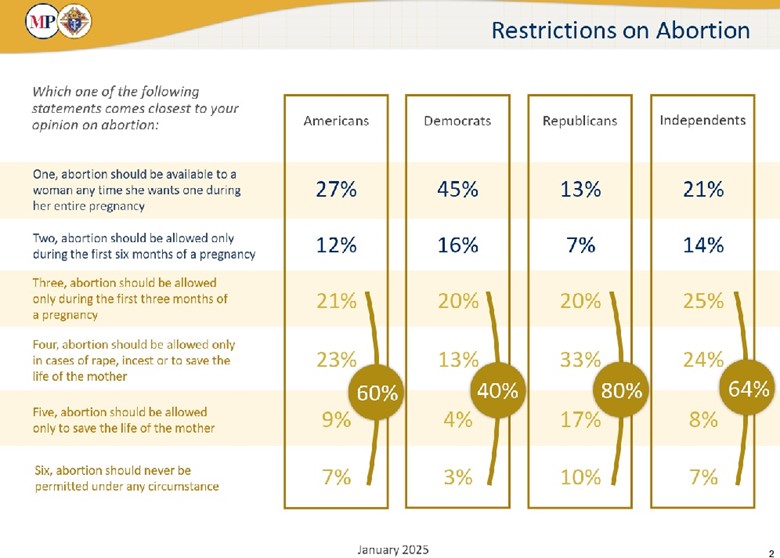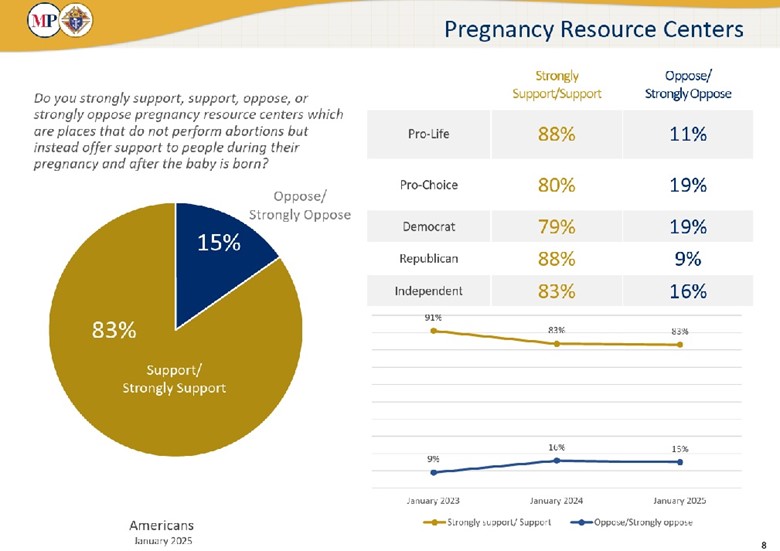Whether you believe in a woman’s Right to Choose (RTC) or a preborn baby’s Right to Life (RTL), I have a question for you.
Do you think there is any ground for mutual agreement on this issue with those who do not believe like you do?
If you’ve spent significant time listening carefully to arguments on both sides, I would completely understand if your answer to that question is a resounding “no.”
However, I would like to invite you to step outside the philosophical debate around RTC and RTL for just a moment and consider recent research (January 2025) conducted by the Marist Poll for the Knights of Columbus.
I want to show you three results from this poll.
Two of the results won’t surprise you all that much.
But the third result appears to completely contradict the first two results, almost as if they were talking to a different set of survey participants.
But these results were, in fact, from the exact same survey participants.
Yet, as I will explain later in this article, as contradictory as the third result may seem it’s a result that I think makes complete sense, and is the basis upon which Right to Life believers and Right to Choose believers can actually find common ground.
Here is the first set of data I want to show you, a graph showing the historical trend of American’s beliefs with respect to Right to Life (Pro-Life) vs Right to Choose (Pro-Choice):

Clearly, according to this data, over the last 15 years Americans have trended towards identifying themselves as more pro-choice than pro-life, with that trendline indicating some acceleration the last 5 years.
But actually, the trend towards pro-choice belief among Americans is even stronger than this graph would indicate, and that brings us to the second set of data I want to show you.
Among the exact same participants in this poll, although 36% of Americans identified as pro-life, only 7% of Americans said they believe that “abortion should never be permitted under any circumstance.”

This is a very interesting result because the core pro-life position is that “abortion should never be permitted under any circumstance.”
Therefore, we can conclude that a little less than 1 in 10 Americans actually believe in the core pro-life position.
Isn’t that interesting?
But here’s where it gets even more interesting, which brings us to our third set of data.
The pollsters asked the exact same survey participants the following question:
“Do you strongly support, support, oppose or strongly oppose pregnancy resource centers which are places that do not perform abortions but instead offer support to people during their pregnancy and after the baby is born?”
Now clearly, these pregnancy resource centers would fall into the pro-life camp because they do not perform abortions, so if you had to guess I bet you would say that the percent of “I support” answers versus “I oppose” answers would mirror the responses about being pro-life (36%) versus pro-choice (62%).
But that is not the case.
At all.
In fact, the exact same survey participants reveal that fully 83% of Americans strongly support, or support, pregnancy resource centers.
And what may be even more surprising to you, even shocking perhaps, is that 80% of those who identify as pro-choice strongly support, or support, pregnancy resource centers.

Let that survey result sink in for a minute.
Now that data may surprise you if you spend much of your time deeply embedded in the echo chamber of pro-life media, but I’m actually not surprised at all.
Why?
Because I know people who fall in the Right to Choose camp, and I know they would never advocate that a woman facing an unexpected pregnancy, whose initial inclination is to have her baby, should feel in any way like she has no choice but to terminate her pregnancy.
Of course, those in the Right to Life camp believe the same.
So that is a common belief held by both the Right to Choose and Right to Life camps.
And therefore there is an opportunity for Right to Life believers and Right to Choose believers to find common ground in the area of offering support for women facing unexpected pregnancies.
And research supports that there is a major opportunity for both camps to collaborate in the area of offering support to women.
In a 2023 research report titled, “The Effects of Abortion Decision Rightness and Decision Type on Women’s Satisfaction and Mental Health (https://pubmed.ncbi.nlm.nih.gov/37303450/),” researchers discovered in a retrospective survey of 1,000 females that 226 reported a history of abortion.
And interestingly, of those 226 women 33% identified their abortion as wanted, 43% as accepted but inconsistent with their values and preferences, and 24% as unwanted or coerced.
And here’s the crux of the research, copied from the summary of the report: “60% of the women reported that they would have preferred to give birth if they had received more support from others or had more financial security.”
Now keep that summary in mind as you recall the Marist poll result of 83% of Americans, including 80% of pro-choice believers, supporting pregnancy resource centers.
Do you see how there is common ground for Right to Life believers and Right to Choose believers to work together to support 60% of women facing unexpected pregnancies who end up seeking an abortion even though they would prefer to give birth?
More to come…
Regards,
Brett Attebery

